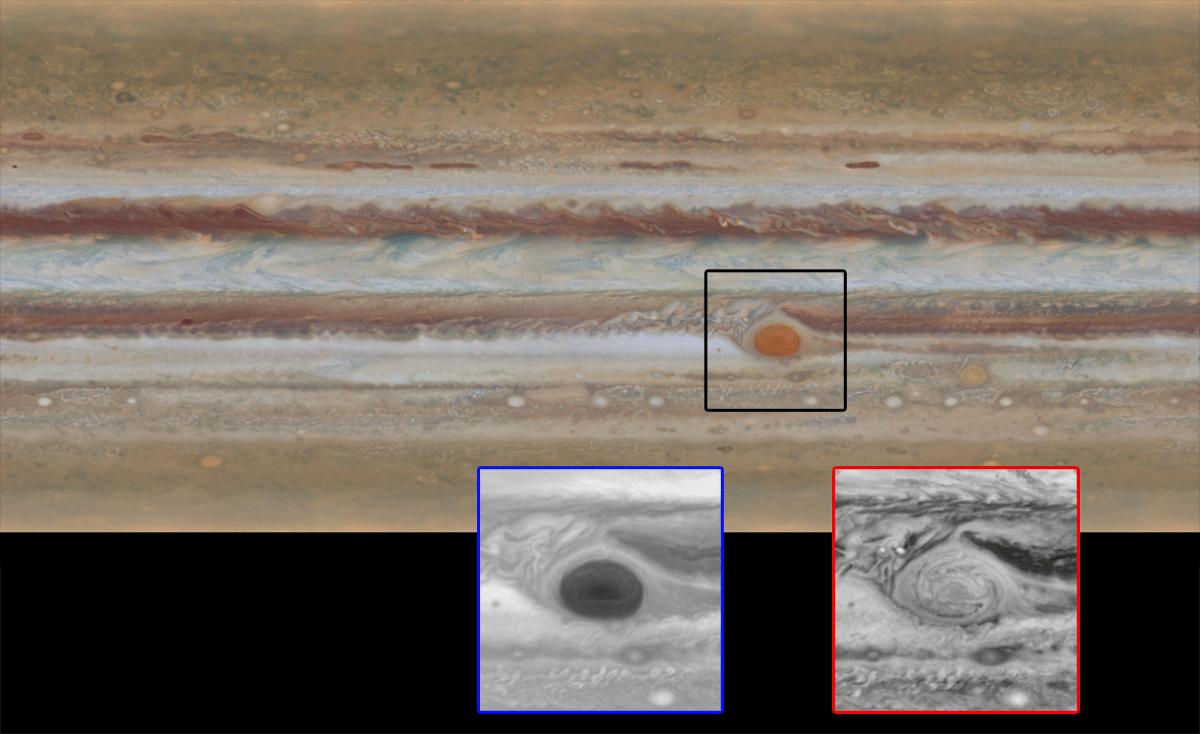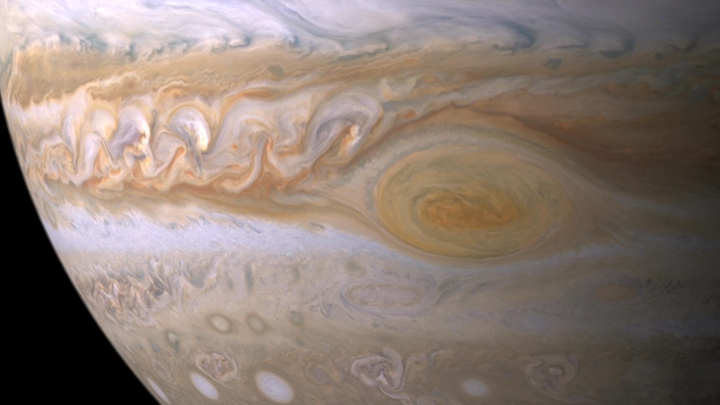It’s a storm that’s been raging for at least 300 years and new images are revealing mysterious features of this massive cyclone.

Jupiter, the most massive planet in our solar system, has stunning clouds made up of ammonia. The swirling clouds, which can be seen from Earth using a telescope, produce beautiful eddies and storms. The Great Red Spot (GRS), which is twice as wide as Earth, is the most prominent and long-lasting.
New images taken by the Hubble Space Telescope have uncovered a few strange features in the storm.
The Great Red Spot, with swirling winds of 540 km/h, may not always be so great. Astronomers have known for some time that the storm is shrinking and recent findings have found that it is shrinking at a faster rate than had been observed before.
Though the new images found that it is about 240 km shorter than it was in 2014 (along the length of the storm), it appears the shrinking may be slowing.
READ MORE: What’s causing Jupiter’s Great Red Spot? Nobody knows
Though it’s understood that Jupiter’s clouds are comprised of ammonia, scientists don’t know what gives the Great Red Spot its reddish colour. And lately, the storm is more orange than red, leaving astronomers to wonder what is responsible.
The new images also revealed a filament that spans the entire storm, something that hadn’t been observed before.
Something else that piqued the interest of astronomers was a wave structure just north of Jupiter’s equator. When the Voyager spacecraft passed Jupiter in 1978, it saw a similar wave, but astronomers didn’t believe it was anything of significance since it was barely visible. Yet, here it is again.
Waves like this can be found on Earth where cyclones form. So it’s unknown what this mysterious and elusive wave might bring.
The images are part of a series of annual portraits taken by Hubble. Neptune, Uranus and Saturn will all be added later.
NASA’ s Juno mission is on its way to Jupiter, scheduled to arrive in July 2016.



Comments